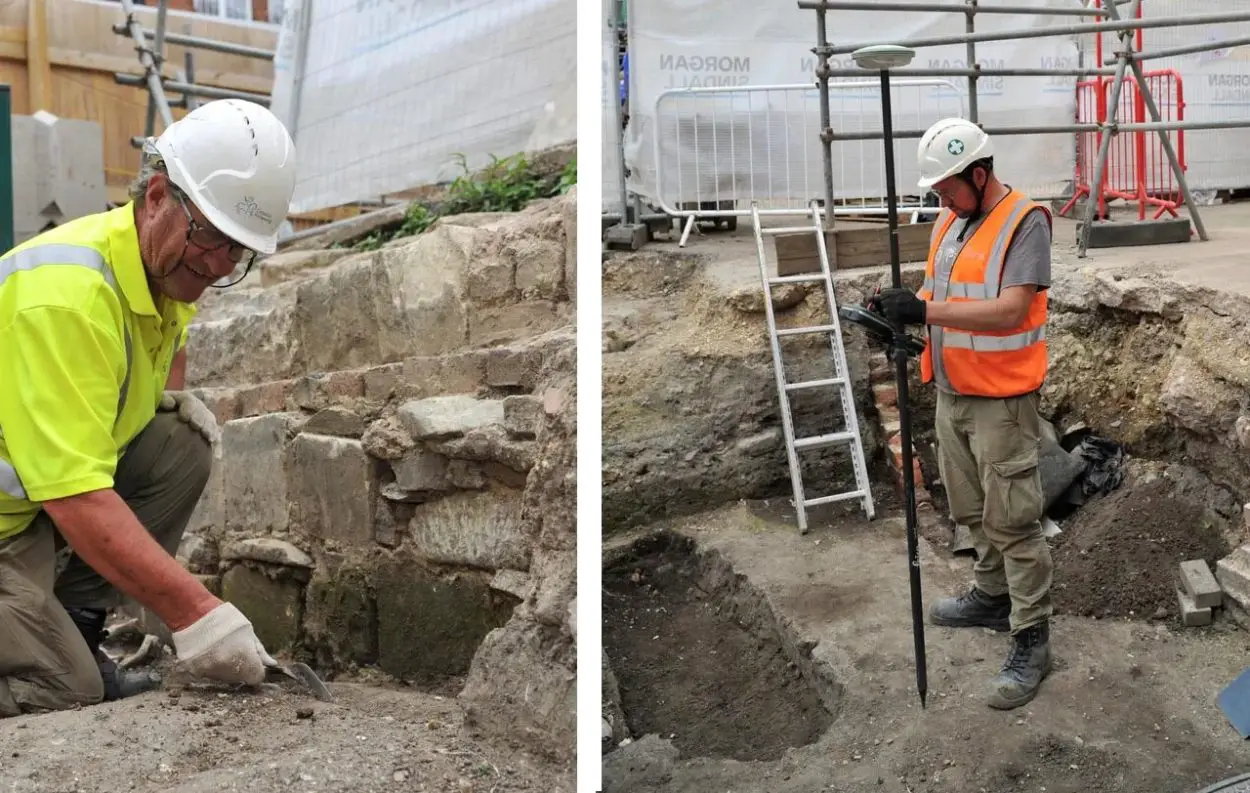Archaeologists from Cotswold archaeology have uncovered a section of an 18th century church’s external wall and porch during excavations at the University of Gloucestershire’s new City Campus in Gloucester, England.
The team have been excavating at the former location of a Debeham’s department store between Eastgate Street and Northgate Street, which during the Roman period was the north-eastern quadrant of Roman Colonia Glevum.
Colonia Glevum was an early fort established around AD 48 at an important crossing of the River Severn, and near to the Fosse Way, the early front line after the Roman invasion of Britain. The fort grew to become a “colonia” of retired legionaries and housed an administrative basilica, a forum market-place, and high status dwellings with mosaic floors.
Excavations have revealed an eight-metre-long footing of the Western elevation and porch of the post-medieval St Aldate’s Church, built around 1750. Thought to be named after a bishop of Gloucester who died in battle in 577, the post-medieval church replaced a medieval church of the same name that may have pre-dated the Norman Conquest.
Historians believe the medieval St Aldate’s Church was demolished in the mid-17th century after it sustained damage during the English Civil War (1642-1652).

Cliff Bateman, Senior Project Officer at the City Campus site, said: “The footing we have discovered is only 20cm to 30cm below the current ground surface and it has survived very well. It’s an interesting discovery in that, although the post-medieval St Aldate’s Church was built in the mid-18th century, photographs taken in later years very clearly show that it was a brick church, almost neoclassical in its design.”
“The footing is made up entirely of very well-dressed limestone blocks, some of which I presume may have come from the earlier medieval church and possibly from the nearby Roman and medieval defensive town wall that was razed after the Civil War,” added Bateman.
Although the location of the medieval church is uncertain, the researchers believe that the 18th century church used the footprint of its predecessor which will enable archaeologists to determine the location of the church burial ground.
Within the same location, the team have discovered 12 burials, the vast majority of which are associated with the medieval St Aldate’s Church. All the remains are being sensitively and respectfully transferred for assessment and analysis, before being reinterred.
Header Image Credit : Cotswold Archaeology





